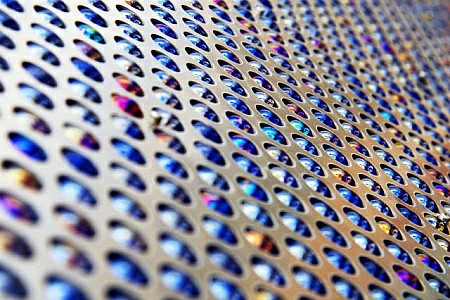[新译林版3Aunit2教学反思]工作已将近一个月了,唯一让我觉得有点欣慰的是:学生熟悉得差不多了,一个班中的绝大部分学生我能叫得出名字,但是在教学过程中仍是有许多问题存在。1.课堂纪律的掌控这个问题其...+阅读
"Don't ever mark in a book!" Thousands of teachers, librarians and parents he so advised. But Mortimer Adler disagrees. He thinks so long as you own the book and needn't preserve its physical appearance, marking it properly will grant you the ownership of the book in the true sense of the word and make it a part of yourself.
HOW TO MARK A BOOK
Mortimer J. Adler
You know you he to read "between the lines" to get the most out of anything. I want to persuade you to do something equally important in the course of your reading. I want to persuade you to "write between the lines." Unless you do, you are not likely to do the most efficient kind of reading.
You shouldn't mark up a book which isn't yours. Librarians (or your friends) who lend you books expect you to keep them clean, and you should. If you decide that I am right about the usefulness of marking books, you will he to buy them.
There are two ways in which one can own a book. The first is the property right you establish by paying for it, just as you pay for clothes and furniture. But this act of purchase is only the prelude to possession. Full ownership es only when you he made it a part of yourself, and the best way to make yourself a part of it is by writing in it. An illustration may make the point clear. You buy a beefsteak and transfer it from the butcher's icebox to your own. But you do not own the beefsteak in the most important sense until you consume it and get it into your bloodstream. I am arguing that books, too, must be absorbed in your bloodstream to do you any good.
There are three kinds of book owners. The first has all the standard sets and best-sellers —— unread, untouched. (This individual owns wood-pulp and ink, not books.) The second has a great many books —— a few of them read through, most of them dipped into, but all of them as clean and shiny as the day they were bought. (This person would probably like to make books his own, but is restrained by a false respect for their physical appearance.) The third has a few books or many —— every one of them dog-eared and dilapidated, shaken and loosened by continual use, marked and scribbled in from front to back. (This man owns books.)
Is it false respect, you may ask, to preserve intact a beautifully printed book, an elegantly bound edition? Of course not. I'd no more scribble all over a first edition of "Paradise Lost" than I'd give my baby a set of crayons and an original Rembrandt! I wouldn't mark up a painting or a statue. Its soul, so to speak, is inseparable from its body. And the beauty of a rare edition or of a richly manufactured volume is like that of painting or a statue. If your respect for magnificent binding or printing gets in the way, buy yourself a cheap edition and pay your respects to the author.
Why is marking up a book indispensable to reading? First, it keeps you awake. (And I don't mean merely conscious; I mean wide awake.) In the second place, reading, if it is active, is thinking, and thinking tends to express itself in words, spoken or written. The marked book is usually the thought-through book. Finally, writing helps you remember the thoughts you had, or the thoughts the author expressed. Let me develop these three points.
If reading is to acplish anything more than passing time, it must be active. you can't let your eyes glide across the lines of a book and e up with an understanding of what you he read. Now an ordinary piece of light fiction, like, say, "Gone with the Wind," doesn't require the most active kind of reading. The books you read for pleasure can be read in a state of relaxation, and nothing is lost. But a great book, rich in ideas and beauty, a book that raises and tries to answer great fundamental questions, demands the most active reading of which you are capable. You don't absorb the ideas of John Dewey the way you absorb the crooning of Mr. Vallee. You he to reach for them. That you cannot do while you're asleep.
If, when you've finished reading a book, the pages are filled with your notes, you know that you read actively. The most famous active reader of great books I know is President Hutchins, of the University of Chicago. He also has the hardest schedule of business activities of any man I know. He invariably read with pencil, and sometimes, when he picks up a book and pencil in the evening, he finds himself, instead of making intelligent notes, drawing what he calls " ciar factories" on the margins. When that happens, he puts the book down. He knows he's too tired to read, and he's just wasting time.
But, you may ask, why is writing necessary? Well, the physical act of writing, with your own hand, brings words and sentences more sharply before your mind and preserves them better in your memory. To set down your reaction to important words and sentences you he read, and the questions they he raised in your mind, is to preserve those reactions and sharpen those questions. You can pick up the book the following week or year, and there are all your points of agreement, disagreement, doubt and inquiry. It's like resuming an interrupted conversation with the advantage of being able to pick up where you left off.
And that is exactly what reading a book should be: a conversation between you and the author. Presumably he knows more about the subject than you do; naturally you'll he the proper humility as you approach him. But don't let anybody tell you that a reader is supposed to be solely on the receiving end. Understanding is a two-way operation; learning doesn't consist in being an empty receptacle. The learner has to question himself and question the teacher. He even has to argue with the teacher, once he understands what the teacher is saying. And marking a book is literally an expression of your differences, or agreements of opinion, with the author.
There are all kinds of devices for marking a book intelligently and fruitfully. Here's the way I do it:
1. Underlining: of major points, of important or forceful statements.
2. Vertical lines at the margin: to emphasize a statement already underlined.
3. Star, asterisk, or other doo-dad at the margin: to be used sparingly, to emphasize the ten or twenty most important statements in the book.
4. Numbers in the margin: to indicate the sequence of points the author makes in developing a single argument.
5. Number of other pages in the margin: to indicate where else in the book the author made points relevant to the point marked; to tie up the ideas in a book, which, though they may be separated by many pages, belong together.
6. Circling of key words or phrases.
7. Writing in the margin, or at the top or bottom of the page, for the sake of: recording questions (and perhaps answers) which a passage raise in your mind; reducing a plicated discussion to a simple statement; recording the sequence of major points right through the book. I use the end-papers at the back of the book to make a personal index of the author's points in the order of their appearance.
The front end-papers are, to me, the most important. Some people reserve them for a fancy bookplate, I reserve them for fancy thinking. After I he finished reading the book and making my personal index on the back end-papers, I turn to the front and try to outline the book, not page by page, or point by point (I've already done that at the back), but as an integrated structure, with a basic unity and an order of parts. This outline is, to me, the measure of my understanding of the work.
New Words
persuade
vt. cause (sb.) to do sth. by reasoning, arguing, etc. 说服,劝服
librarian
n. 图书馆管理员
property
n. (collectively) things owned; possessions 财产
prelude
n. action, event, etc. that serves as an introduction 序幕;前奏曲
possession
n. possessing; ownership; (pl.) property 拥有;所有权;财产
ownership
n. the possessing (of sth.); right of possessing 所有(权)
illustration
n. an example which explains the meaning of sth.; an explanatory picture, diagram, etc. 例;图例;插图
beefsteak
n. 牛排
transfer
vt. had over the possession of (property, etc.); change officially from one position, etc. to another 转移;调动
butcher
n. a person who kills, cuts up and sells animals for food 屠夫
icebox
n. a box where food is kept cool with blocks of ice; (AmE) refrigerator
bloodstream
n. the blood as it flows through the blood vessels of the body 血流
absorb
vt. take or such in (liquids); take in (knowledge, ideas, etc.)吸收
best-seller
n. book that is sold in very large numbers 畅销书
individual
n. any one human being ( contrasted with society ) 个人
woodpulp
n. 木(纸)浆
dip
v. plunge or be plunged quickly or briefly into a liquid, esp. to wet or coat 浸;蘸
shiny
a. giving off light as if polished; bright 发亮的
restrain
vt. prevent; control; hold back 抑制;控制,约束
dogeared
a. (of a book) hing he corners of the pages bent down with use, like a dog's ears (书页)卷角的
dilapidated
a. (of things) broken and old; falling to pieces 破旧的;倾坍的
loosen
v. make or bee loose or looser (使)松开
continual
a. repeated; frequent 不断的;频繁的
scribble
v. write hastily or carelessly; write meaningless marks on paper, etc. 潦草书写;乱涂
preserve
vi. keep safe from harm of danger 保护;保存
intact
a. untouched; undamaged 完整无损的
elegantly
ad. beautifully; gracefully 优美地;雅致地
elegant a.
bind (bound)
vt. tie or fasten with a rope, etc.; fasten together sheets of (a book) and enclose within a cover 捆,绑;装订(书)
edition
n. form in which a book is published; total number of copies (of a book, newspaper, etc.) issued from the same types (书等的)版本;版
paradise
n. the Garden of Eden; Heen 伊甸园;天堂
crayon
n. 蜡笔; 颜色笔
original
a. of or relating to an origin or beginning; being the first instance or source from which a cop can be made 最初的;原著的;原创作者的
painting
n. a painted picture; picture
statue
n. an image of a person or animal in wood, stone, bronze, etc. 雕像
inseparable
a. impossible to separate from one another
manufacture
vt. make, produce on a large scale by machinery 制造;(大量)生产
magnificent
a. splendid; remarkable 华丽的;宏伟的
indispensable
a. absolutely essential or necessary 必不可少的
conscious
a. aware; able to feel and think 有意识的;神志清醒
understanding
n. knowledge of the nature of sth., based esp. on learning or experience 理解
fiction
n. (branch of literature concerned with) stories, novels and romances 小说
croon
vi. sing gently in a low soft voice, usu. with much feeling 低声吟唱
reader
n. person who reads
invariably
ad. unchangeable; constantly 不变地;始终如一地
intelligent
a. hing or showing a high degree of powers of reasoning or understanding 聪明的
ciar(e)
n. 鱼子酱
sharpen
v. bee or make sharp(er)
disagreement
n. the fact or a case of disagreeing; lack of similarity 分歧;不一致
disagree vi
inquiry
n. question; asking 询问
resume
vt. go on after stopping for a time (中断后)重新开始
naturally
ad. of course; as one could he expected
humility
n. humble condition or state of mind 谦卑
solely
ad. not including anything else or any others; only
sole a.
receptacle
n. a container for keeping things in 容器
literally
ad. actually; virtually 确实地;简直
fruitfully
ad. productively; with good results 富有成果地
fruitful a.
underline
vt. draw a line under (a word, etc.) esp. to show importance 在……下划线(表示强调)
forceful
a. strong; powerful
vertical
a. 垂直的
emphasize
vt. call attention to; stress 强调
asterisk
n. a starlike mark used to call attention to sth. 星号(即*)
doo-dad
n. (informal) a fancy, trifling ornament 小装饰物
sparingly
ad. economically; frugally 节约地
sequence
n. succession; connected line of events, ideas, etc. 顺序;连续;一连串
relevant
a. connected with what is being discussed; appropriate 有关的;适宜的
phrase
n. 短语
end-paper
n. (often pl.) a piece of blank paper stuck inside the cover at the beginning or end of a book 衬页
index
n. 索引
fancy
a. not ordinary; brightly coloured 别致的;花哨的
bookplate
n. a piece of paper with the owner's name, usu. pasted to the inside front cover of a book 藏书票
integrate
vt. put or bring together (parts) into a whole 使成一整体
structure
n. way in which sth. is put together, anized, etc.; framework or essential parts of a building 结构
basic
a. essential; fundamental 主要的;基本的
unity
m. an arrangement of parts to form a plete whole; the state of being united 总体布局;统一
Phrases if I may use this expression, etc. 可以说;容许我打个譬喻
get in the way
bee a nuisance or hindrance 挡道;碍事
in the second place
as the second thing in order or importance 第二,其次
think through
think about until one reaches an understanding or conclusion 彻底全面考虑
reach for
stretch out one's hand to grasp; make an effort to grasp 伸手去抓;努力争取
set down
write down on paper
pick up
start again after interruption 中断后重新开始
lee off
stop
consist in
lie in; be equivalent to 在于;存在于
tie up
connect closely; fasten with rope, etc. 系紧;捆牢
reduce……to
state in a more concise form; summarize as 把……归纳为
Proper Names
Rembrandt
伦勃朗(姓氏)
Dewey
杜威(姓氏)
Vallee
瓦利(姓氏)
Hutchins
哈钦斯
Chicago
芝加哥(美国城市)
以下为关联文档:
Unit6 Whose dress is this本课时是Storytime的新授部分。主要话题是谈论化妆舞会的服装,呈现物品的所属关系。本节课教学思路清晰,能注重新旧知识的衔接,情景创设生动有效,学生在愉悦的氛围中感受、学习...

案例与反思6A Unit 1 Public signs 教学反思我们常用 情境教学法 进行英语课堂教学,形式多样,操练频繁,学生也能滔滔不绝地说一大段对话,教学效果似乎很理想。但是,仔细分析,我们不难发现,学生的交流有很大点的局限性。为了提...

流动的语汇,灵动的课堂——7AUnit1的教学反思一、案例分析:(Anylyses of the contents)本节课的内容是7A Unit1 Reading (1),旨在帮助学生学会介绍自己和他人,是将听、说、读、写结合在一起进行综合训练并重点突出提高学生...

3B Unit 5 Plus and minus 教学反思这次教研课所执教的是小学牛津英语3B Unit 5 Plus and minus。这节课要求学生在已经学习了数字120的基础上,继续观察并加强对单词词尾-teen/ -ty的发音练习,针对有难度的数词...

6A Unit 6 HolidaysPart BCE教学反思本单元主要是围绕 谈论节日里所做的事 这一话题展开的教学活动。很多节日都是学生生活中实实在在欢度过的,同学们都有非常丰富的亲身体验。在教学中,为了更好地调动学生的积极...

译林版三下Unit 6 What time is it近期,我们三年级的学生在学习Unit6 What time is it?一课,在设计第一课时Story time的教学过程中,我作了以下尝试:一、句型教学我们现在用的新版教材中,每个单元都有Story time...

教学案例:7B Unit 4 Finding your way Reading2By Deng Heng from Taicang No.1 Middle SchoolLearning aims:By the end of the class, students will be able to:retell the main idea of the passage according to...
4B Unit 5 Seasons story time教学案例教学目标:1. 认识、会读单词spring, summer, autumn, winter; warm, hot, cool, cold; season 2. 认识、会读每个季节对应的活动类词组fly kites go boating,eat ice cream,go...
Unit3学习单词活动名称:英语 Unit 3学习单词 活动目标: 1、学习单词star/rainbow. 2、让孩子体验英语活动的乐趣。活动准备: 1、英语书。 2、英语碟片。 3、单词图卡。活动过程: 一、Step one...



